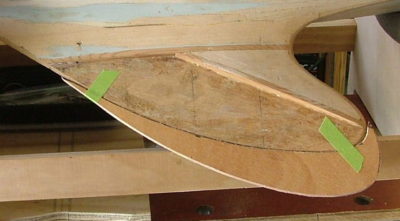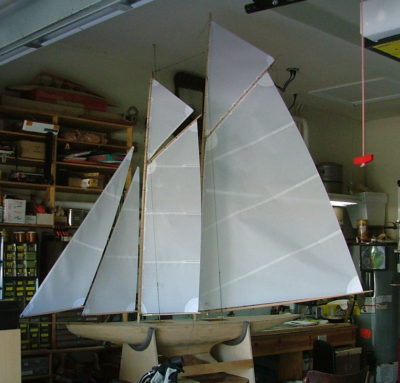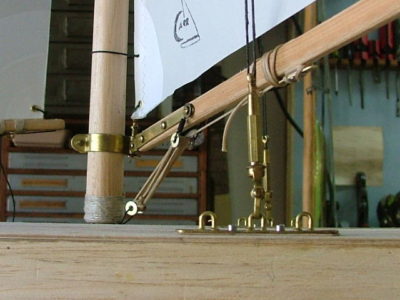More on Prospero
by Earl Boebert, Russell Potts, Art Holzman
As is so often the case, once we run an article on a boat (Prospero, Vol. 13 No. 2) we get a response from our readers, and the Prospero article in our last issue was no exception. Here are extracts from some emails from Russell Potts:
Very few people could build to the standards WJD designed to. Look at what’s left for structure weight on Prospero; only 5 pounds for hull, deck. fittings and effectively two rigs. A project I ran for a GRP (Fiberglass — Ed.) version finally came to nothing because my moulder, who normally did shells for scale power models, couldn’t get it into his head how light it had to be.
The design was clever in lots of ways. Not only the first published use of a vang, twenty years before it was first use by full size sailors on 14 foot International dinghies, but rigged so she was a 15-rater with her topsails and a 10-r without. Because she was in print for so long many examples were built right into the post war period, but, as you say there was never a strong schooner class. Many people boiled down the design to 75%, still rigged as a schooner, or 50% rigged as a sloop. One of the latter passed through eBay only last week. Though there never seems to have been a schooner class there was some schooner racing in the immediate aftermath of the design’s appearance. I recall seeing a photo of the pond at Blackheath, just down the road from me, with a dozen or so schooners, most of which look to be Prospero clones or close sisters.
This was from before 1914.Because the weights are so tight and because the boat looks so much better if she can carry her topsails in more than a whisper, some modern builders, who wanted to include radio gear, have give her a deeper fin keel to ensure that she can hold up her rig. This is especially important if you are going to use modern sail cloth rather than the original cotton. In the Prospero project that I envisaged, we re-drew the profile to set the lead an inch or so deeper than the original. This, we calculated, with the slight increase in the weight of the lead that could be accommodated by building in GRP, even with radio gear, would give rather greater stability than the original design. We also planned for the skeg to be a separate moulding which could be easily omitted if the builder chose to fit a more effective spade rudder for radio control.

Member Art Holzman has been building one, in one of those long projects that involve periods of storage as other matters arise. Art notes that there is a dimensioning error on the sail plan; the leech of the staysail should be 29 1⁄2 inches instead of 24 1⁄2. The photographs show Art’s boat, the keel extension he has made, and the nifty vangs he’s put on the two booms.


